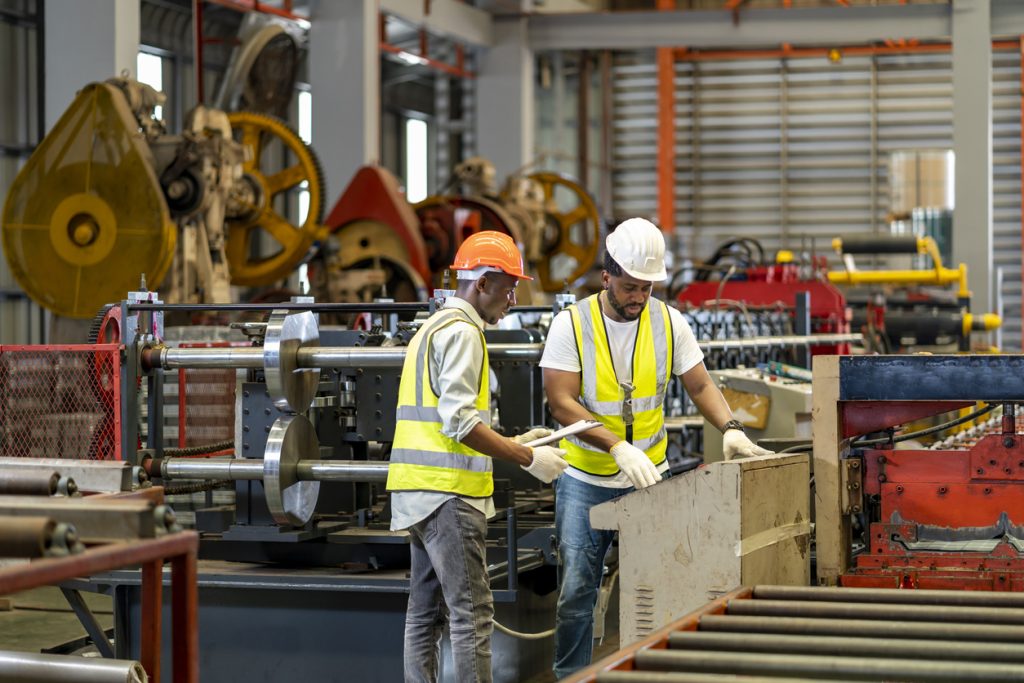Leaks are more than just leaks
The last thing anyone wants to do is worry about finding leaks, yet the consequences of undetected leaks are crucial to be aware of. Hydraulic systems use fluid to transmit power. Any leaks in the system, no matter how small, are detrimental to workflow. Leaks cause both the loss of pressure, decrease in system performance, and system breakdown. Disrupting the flow of the work day from broken down equipment leads to wasted time, lower productivity, safety issues, environmental harm, legal penalties, and even fines. The best method of leak detection to prevent these problems is UV fluorescent dye, as it acts as an on-the-spot leak-checking method as well as non-stop leak detection coverage, perfect to include in a routine maintenance program. Spectroline leak detection dye is patented and made of clean ingredients, safe for any system. Spectroline leak detection products are available globally. Find a distributor here.
Common causes of hydraulic equipment leaks and ways to combat them
Damaged Seals
Seals are critical components in hydraulic systems. They prevent fluid from escaping from spots like cylinders, pumps, and valves. Over time, seals can become damaged due to high pressures, temperature fluctuations, or contamination. It is good practice to replace damaged seals when needed and inspect equipment regularly in order to prevent leaks. Spectroline’s LeakTracker series of lamps are a compact design for getting into tight spaces, durable, and made with powerful, high-intensity LEDs. Years of heavy use in any environment is no problem for a Spectroline leak detection lamp. There is a designated Spectroline LeakTracker for everyone’s journey. View them all here!
Loose Fittings
Fittings that are not properly tightened can become loose over time, causing- you guessed it. Leaks. Regularly check all connections and fittings and tighten them appropriately. Quickly find leaks after a few seconds, and get back into your workflow with Spectroline’s OIL-GLO Ultra UV fluorescent leak detection dye, trusted by more OEMs than any competition.
Damaged Lines
Physical impacts or abrasion damage hydraulic lines. Check hydraulic lines for symptoms of depletion, and replace damaged lines.
Worn O-rings
O-rings are used in hydraulic fittings and valves to prevent fluid leaks. Over time, they can lose their effectiveness. Replace worn O-rings to keep equipment running optimally.
Polluted Fluid
Contaminants in the hydraulic fluid damage seals and other components, leading to leaks. Ensure fluid is clean and meets the manufacturer’s specifications. Regularly change the hydraulic fluid and use proper filtration systems. Did you know that Spectroline leak detection dye is highly concentrated and non-particulate? Other dyes in other markets cause sludging with their particulate formula in powder form and it contaminates the system. Our dye is clean, safe, and liquid-based.


 Improper Assembly
Improper Assembly
Putting together hydraulic components incorrectly is a sure way to create room for leaks. When assembling, make sure that all parts are correctly installed according to the manufacturer’s guidelines. If you are not sure about the manufacturer’s guidelines, find the right person to ask about them.
High Operating Pressure
Exceeding the recommended operating pressure puts stress on seals and connections, leading to leaks. Operate the hydraulic equipment within the specified pressure range. Spectroline dyes are safe to use in any closed-loop circulatory fluid system like water/glycol, oil, hydraulic, or gasoline/diesel fuel as well as countless others!
Temperature Extremes
The performance of hydraulic seals and hoses are affected by the severity of temperature. Equipment operating in extreme conditions should have correct seals and hoses rated for those temperatures.
Excessive Vibration
Vibration can lead to loosening of fittings and connections. Use vibration-damping materials or mounting solutions to reduce the impact of vibrations on the hydraulic system.
Physical Damage
Any mechanical damage to components, like cylinders or valves, result in leaks. Avoid impacts or contact with other objects that could cause damage.
Inspect and Protect Equipment
Regular inspection and maintenance of hydraulic equipment are essential in preventing leaks and fixing them quickly. Additionally, ensure that the equipment is operated by trained personnel who understand the proper use and care of hydraulic systems. Get everything you need to conquer leaks with our leak detection kits.







